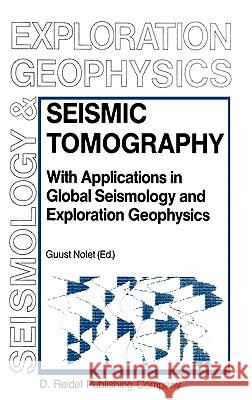Seismic Tomography: With Applications in Global Seismology and Exploration Geophysics » książka
Seismic Tomography: With Applications in Global Seismology and Exploration Geophysics
ISBN-13: 9789027725219 / Angielski / Twarda / 1987 / 386 str.
Seismic Tomography: With Applications in Global Seismology and Exploration Geophysics
ISBN-13: 9789027725219 / Angielski / Twarda / 1987 / 386 str.
(netto: 576,41 VAT: 5%)
Najniższa cena z 30 dni: 578,30
ok. 22 dni roboczych
Bez gwarancji dostawy przed świętami
Darmowa dostawa!
Methods to eonstruet images of an objeet from "projeetions" of x-rays, ultrasound or eleetromagnetie waves have found wide applieations in eleetron mieroseopy, diagnostie medicine and radio astronomy. Projeetions are measurable quantities that are a funetiona- usually involving a line integral - of physieal properties of an objeet. Convolutional methods, or iterative algorithms to solve large systems of linear equations are used to reeonstruet the objeet. In prineiple, there is no reasan why similar image reeonstruetions ean not be made with seismie waves. In praetiee, seismic tomography meets with a number of diffieulties, and it is not until the last deeade that imaging of transmitted seismie waves has found applicatian in the Earth sciences. The most important differenee between global seismie tomography and mare eonventional applieations in the laboratory is the faet that the seismologist is eonfronted with the lack of anything resembling a well-eontrolled experimental set-up. Apart from a few nuelear tests, it is not in our power to locate or time seismie events. Apart from a few seabattom seismographs, our sensors are located on land -and even there the availability of data depends on eultural and politieal factors. Even in exploratian seismics, praetieal faetors such as the east of an experiment put strong limitations on the eompleteness of the data set.











